Published: 15:39 Tuesday - November 01, 2011
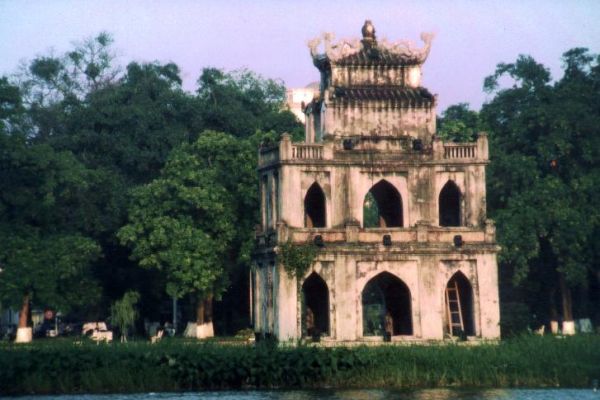
Hoan Kiem Lake. Considered the heart of Hanoi, Hoan Kiem Lake is its symbol. Ngoc Son temple on the lake is dedicated to the God of literature, General Tran Hung Dao, who defeated the Mongolian enemy in the 13th century and the Pitron Saint of physicians. A large tortoise carcass of 2.1 m long and 250kg heavy that lived some 400-500 years is still kept at the temple. Ngoc Son temple is linked with the Bank by a beautiful curved bridge called The Huc (Morning sunshine). Just at the beginning of the bridge is a stone brush tower. It is located on a small hillock with three carved Chinese characters "Ta Thanh Thien" (writing on the blue sky). At its foot is Dai Nghien (Ink-stab). Many central and municipal bodies as well as busy trade streets are located around Hoan Kiem Lake. In the centre of the Lake there is an islet where the Tortoise Tower stands. The monument of King Le Thai To is situated on the Western Bank of the lake.
Hanoi Old citadel. Hanoi Old Citadel was destroyed and restored many times. At present, only the Northern Gate of the citadel on Phan Dinh Phung street still remains. On its walls, there are traces of bullets left by the French army attacking Hanoi. On Dien Bien Phu street stands the Hanoi flag-tower (60m high), consisting of three layers made of Baked bricks. It was built in 1812 in a prism shape with spiral stairs leading to the platform. It is also a symbol of the capital. Inside Hanoi Old Citadel traces of the grounds of destroyed palaces still remain.
The Ba Dinh Square zone. This zone is situated south of West Lake and North of Hanoi Old Citadel and is well-known for the following historical sites:
- Ho Chi Minh Mausoleum. It was opened on September 2, 1975, standing on the historical Ba Dinh square. This architectural structure has a rectangular form and evokes a lotus. Its upper part was made in the style typical of a traditional Vietnamese pagoda. The Mausoleum is opened daily for people coming to pay their homage to president Ho Chi Minh.
- Uncle Ho's (Ho Chi Minh) house-on-stilts. The house is located in the compound of the Presidential Palace ( former Residence of the Governor General of Tonkin). It is made from wood, in the style typical of the houses of mountain ethnic minorities. Next to the house are century old trees, by the side of a beautiful lake. President Ho Chi Minh lived, worked and hold meetings with top leaders from 1954 until he passed away in this house (September 1969).
- Ho Chi Minh Museum. This five-storey architectural project is situated behind Ho Chi Minh Mausoleum. It was opened on September 2, 1990 on the occasion of the 100th birthday of the President. In this Museum many objects and documents relating to Ho Chi Minh are kept.
The West Lake zone. West Lake has an area of over 800 hectares. It is a former section of the Red River. There are many legends about this lake. Formerly this lake was called "Dam Dam" (Misty lake). Around the lake, stand many palaces of feudal kings and lords. Numerous ancient and beautiful pagodas and temples are also seen in the surroundings of West Lake. In the old times, in the area around West lake there were craft villages specializing in paper and silk production, etc., and villages providing the city with flowers or vegetables. At present, many hotels, restaurants and villas have been built around the lake. In future, this place will be the recreation and tourist spot of Hanoi.
- Co Loa Citadel (Spiral-shaped Citadel), in Dong Anh district, suburban area of Hanoi.
There are ruins of a fortified palace with walls arranged in a spiral that was built in the 3rd century B.C. to serve as the capital of King An Duong Vuong. Of the nine coils of the spiral, which covered an area of more than 5 square kilometers, there remain only the vestiges of three, which in certain places are now about 2 metres high and 15 metres wide. In the centre of the citadel some buildings with valuable sculptures, are still found such as temples dedicated to King An Duong Vuong and his daughter, Princess My Chau, whose love for her husband caused the fall of the kingdom.
- Opera House. The Hanoi Municipal Theatre also known as the Opera House was built by the French in 1911 after the architecture of Paris Opera House. This theatre is the stage for the most interesting and important performances in Hanoi.
- Labour's Culture Palace was built with the help of the Soviet Union, and inaugurated in 1985 on the site of the former Exhibition House. The large hall has 1200 seats and a round stage. The small hall has 250 seats. There are also many places reserved for 24 clubs with various activities.
- Thang Long Water Puppet Theatre. The traditional water puppet shows are staged with original and interesting programs. It is a folk art particular to the people cultivating wet rice fields in North Vietnam. The artists hidden behind a curtain while immersed in water manipulate the puppets through an apparatus put under in the water surface, which serves as the stage.
- Traditional Art Club. Scenes from the most interesting Vietnamese traditional plays are sown here.
- The Cathedral of Hanoi (St. Josheph's Church), built in 1886 in Gothic style, is the most beautiful and largest church in Hanoi. Near the Cathedral is the office of Hanoi's bishop, and in front of it is the Madonna Monastery.
- Cua Bac Church. Its architecture is slightly influenced by that of Vietnamese pagoda and temple.
Hanoi's museums
- Museum of the Revolution, No.25, Tong Dan Street. Various relics of the Vietnamese people's patriotic and revolutionary struggle.
- Museum of History, No. 1, Pham Ngu Lao Street. Rich collections of archaeological findings of great scientific and artistic value, including some relating to the era of the Hung kings, about 4,000 years ago represent the evolution of the Vietnamese nation.
- Museum of the Army, Dien Bien Phu Road. Great periods of the armed struggle of the Vietnamese people are reflected.
- Women's Museum. No.36, Ly Thuong Kiet Street. Here thousands of objects on historical tradition of Vietnamese women in the cause of building and safeguarding the country are displayed. Moreover, there is a special section dealing with the wholehearted support of world's women towards Vietnamese women.
- Museum of Fine Arts. No.68. Nguyen Thai Hoc Street. Artistic works of great value, ranging from bronze drums (first millennium B.C.) to sculptures, paintings, engravings, and lacquer works by contemporary artists are displayed, not to mention folk art.
Principal pagodas and temples in Hanoi
- Mot Cot Pagoda (One pillar pagoda). This is what remains of an ancient and much more imposing pagoda. It was built in 1049 in the shape of a lotus flower. According to a legend, King Ly Thai To, who had no male offspring, once saw in a dream the Goddess of Compassion (Avalokitesvara) sitting on a lotus who handed a boy to him. The King later married a young peasant woman he had met by chance and a son was born to them. As a token of gratitude, he had the pagoda built and dedicated to the Goddess. It is a square pavilion (3x3m) on top of a cylindrical stone pillar (diameter: 1.25m).
- Quan Su Pagoda (Ambassadors' Pagoda). This is the most active Buddhist centre in Hanoi. In the 15th century, this was the site of the Guesthouse for Ambassadors coming from Buddhist countries, with a small pagoda nearby. The pagoda was rebuilt in 1936-42.
- Ba Da Pagoda (Pagoda of the Stone Lady). As the soil was being dug for the building of the citadel of Thang Long (ancient Hanoi), a stone statue of a woman was unearthed. A temple was built to be dedicated to her. It later became a pagoda. The temple dates back to the 15th century.
- Hai Ba Temple (Temple of the Two Ladies). This temple is dedicated to Trung Sisters. One can see in the sanctuary the statues of two women, kneeling with arms raised, as if addressing the people.
- Quan Thanh Temple (or Tran Vu) wrongly called "Pagoda of the Big Buddha" by the French colonialists. It was built by West Lake under the Ly Dynasty (1010-1225) and later reconstructed. Tran Vu was the God of the North. His attributes are a tortoise and a snake. A bronze statue (1677) is 3.72 metres high and weighs 4 tons. A bronze bell dates Back to 1677.
- Tran Quoc Pagoda by West Lake. A stele (1639) carries an inscription on the history of the pagoda. It was built probably on the site of an old royal summer palace.
- Van Mieu Temple (the Temple of Literature). Built in 1070. Later rebuilt. Dedicated to Confucius. It was also the first University in Vietnam (training scholars mandarins) which opened in 1076. It features quietness and harmony with the greenery surrounding it. There is Khue Van Pavilion, 82 stone steles bearing the names of the laureates of royal examinations held over a period of three hundred years (1484-1787).
- Voi Phuc Temple (Temple of Kneeling Elephants). According to a legend, it was built under the reign of King Ly Thanh Tong (1054-1072) and dedicated to Prince Ling Lang who defeated the Sung aggressors, attacking the enemy with his war elephants. Statues of Ling Lang and his men can be seen there.
Vietnam travel - Vietnam travel company - Tours in Vietnam
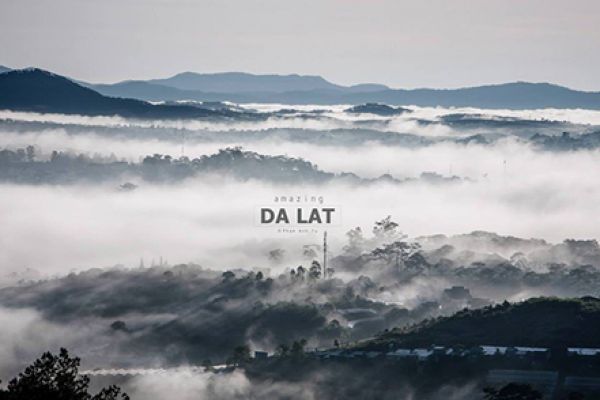
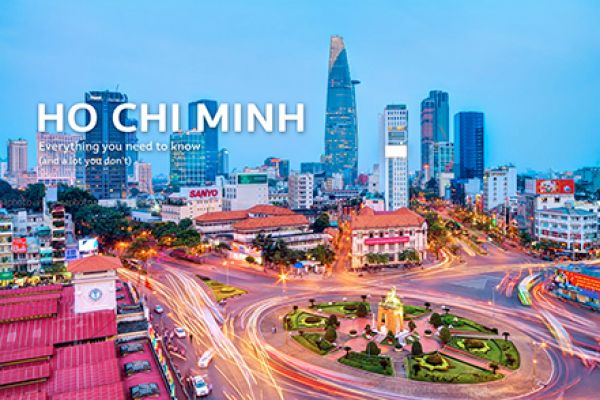

.jpg)
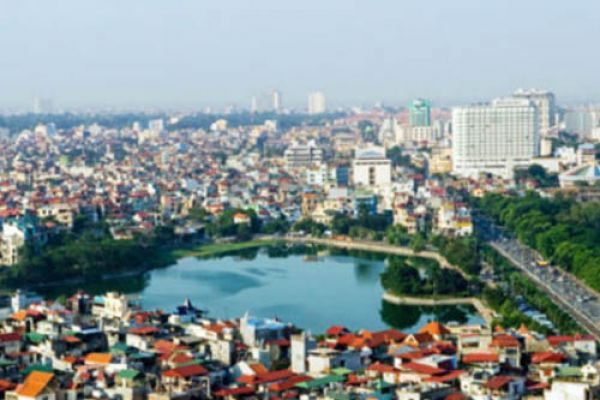
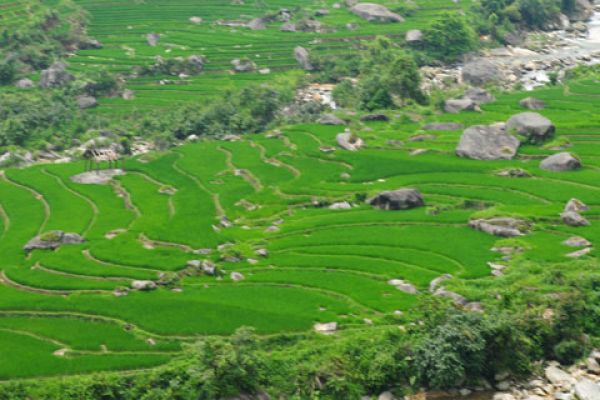
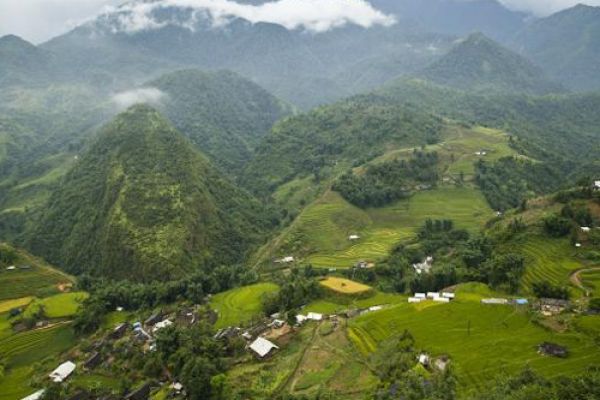

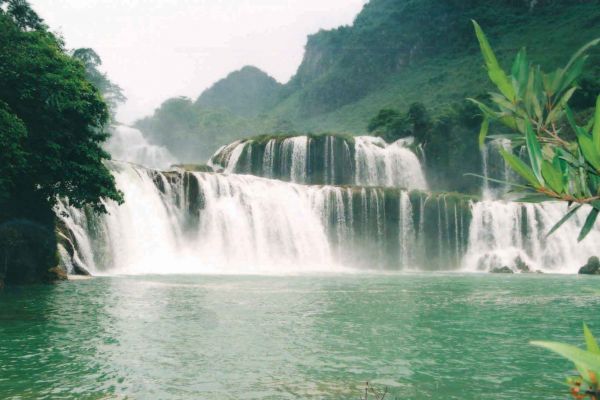
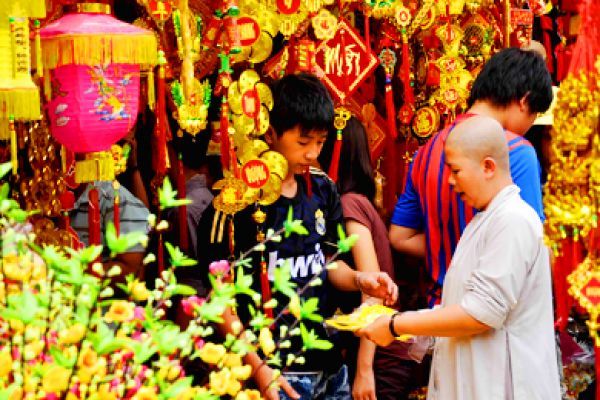
(84-63) 3 826042 – (84-63) 3 511142
No 54 Nguyen Dinh Chieu, Ham Tien Central Mui Ne Beach Binh Thuan Vietnam
523 To Hien Thanh District 10 Ho Chi Minh City Vietnam
Ha Long Halong City Quang Ninh Vietnam
A13 Hung Thong 2 Halong City Quang Ninh Vietnam




